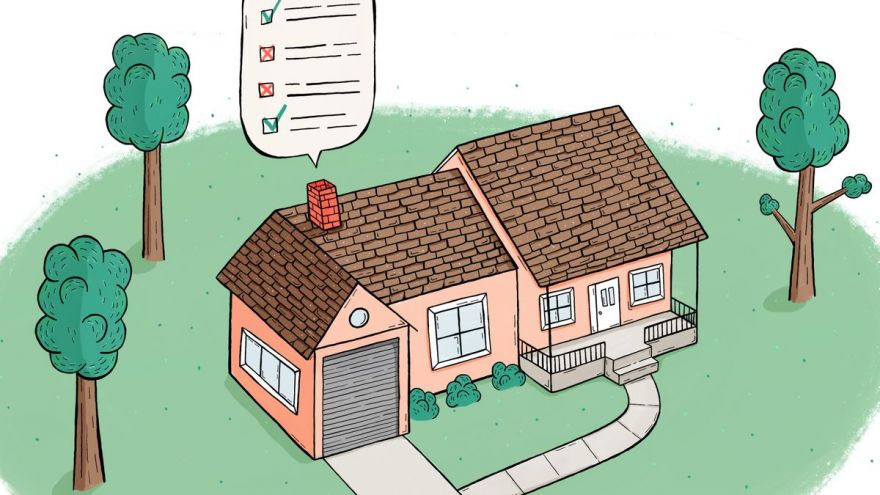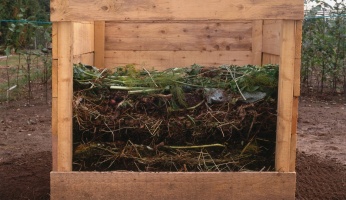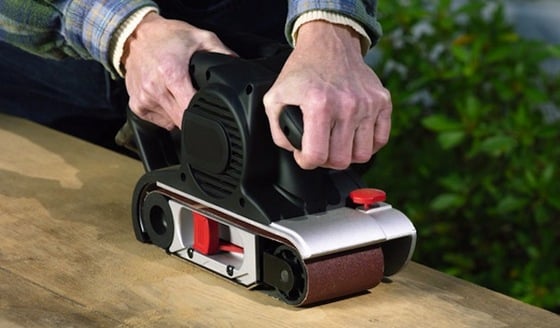- No Obligations
- Stop Paying Too Much For Your Contractor
- No Spam Calling
- Screened & ID Checked Contractors only!
The Most Comprehensive DIY Home Inspection Checklist in 2024
0
 The Most Comprehensive DIY Home Inspection Checklist in 2024
earlyexperts.net
The Most Comprehensive DIY Home Inspection Checklist in 2024
earlyexperts.net
Every homeowner knows that regular maintenance of their property will pay off with smaller repair bills in the future. If you already own a home or are looking to buy, then a checklist is vital to ensure the property is in tip-top condition. If you are buying, then this checklist will be a guide, and any potential purchaser should have a professional home inspection report before committing to buy.
This comprehensive checklist looks at all the main areas of your property and gives you an idea of what to look out for to stop major problems arising in the future. We suggest that all the items listed should be checked annually, and rather than going through the complete list in one go, which will take some time, you could split it up into monthly tasks. Exterior checks could be done in the spring after the winter has done its worst, and interior checks such as plumbing done in the fall before things begin to freeze.
Property Grounds
✓ Check to see if there is any standing water on your property. This can be a sign of bad drainage, and there may be a problem with the grading of drainage away from the house.
✓ Look to see if the septic tank or leach field has a leak.
✓ In both front and back yards look at the landscaping, trees and walkways to see they are in good condition with no bushes or branches touching the house, or the roof.
✓ If you have any exterior structures such as fences, decks, sheds, or retaining walls look to see if they are in good condition and if the wood has been damaged by rot or termite infestation.
✓ If the outside of your home has any stairs or decks, make sure the hand rails are strong and secure.
✓ Walk along all the paths and driveways of your property looking for any pot holes the require filling, and that there is no pooling water close to the house which is a sign the grading needs to be improved, so drainage is away from the home.
✓ Don’t forget any downspouts should be pointed away from the building, and adequate drainage for any heavy rains to flow away from the home.
Property Appearance
✓ Look at the house from a distance to make sure the structure appears straight, and the sides are not bowed or sagging.
✓ The ridge and fascia boards should look to be straight and level; any crookedness could be the earliest sign of subsidence which will be costly to put right.
✓ Carefully look at the frames of the windows and doors to see if they are square. A slightly sticky window or door could be a sign of an underlying structural problem.
✓ At the base of the walls look at the foundations to see if they are solid with no cracks. Problems with the foundations of a building are invariably expensive to repair.
Outside Surfaces
✓ If your home has wood siding, then the cladding should not touch the ground. There needs to be at least a 6-inch (15cm) gap between the ground and any wood siding material.
✓ Look to see that the siding is properly attached, and there is no curling or cracking and that the wood has not started to rot.
✓ If your home has a masonry veneer as a cladding check that the joints are intact and there are not broken or cracked pieces.
✓ Look to see that is properly attached, and there is not flaking or bowing from the building structure.
✓ Like all cladding, there should be no large cracks in stucco as this will let water into the structure of the building.
✓ For vinyl or aluminum siding there should be no dents, cracks or damage. Check that it is firmly attached to the building and there are no signs of bowing.
✓ Vines and ivy are some of the most invasive plants and can easily damage brickwork and siding, so they should be removed from the outside, no matter how charming they may look.
✓ Look for flaking and blisters on the exterior paintwork, and if there are any stains from water or such on the façade of the building.
Wood, Windows, & Doors
✓ Wooden window and door frames, along with any trim should be without cracks or any rot. The joints should also be properly filled so as not to let in any water.
✓ Look to see if any of the window glass is broken or cracked and that any storm screens are not damaged.
✓ Inspect the glazing to make sure the window panes are securely in place, and the putty is in good condition.
✓ Check that drip caps have been installed above the windows, and that any frames have a grade, so water runs away from the window itself.
Up on the Roof
✓ For roofs made of composite, then check there is no curling or cupping in their shape, and they are not falling apart or broken, damaged or missing.
✓ With wooden shingles look for any mold, rot or decay, and check to see that none are broken, missing or cracked.
✓ On flat roofs, there should be no obvious patches, cracks or splits, with a few blisters or wrinkles as possible. An obvious area where dust or dirt has accumulated could mean the drainage on the roof is not adequate. Check the tar seal is constant at the flashings around the edge of the roof.
✓ If the roof has dormers or other penetrations look to see if there is sufficient caulking and it is in good order.
✓ If the eaves of the roof have any venting, make sure it is clean and not obstructed or painted over.
✓ Inspect the gutters for any rust or decay, and that the joints are properly sealed. The guttering should be securely attached to the structure of the building, with no sagging or bending. Over time the gutters can get blocked with dirt and debris, so make sure they are regularly cleaned to stop rainwater overflowing and staining the façade.
✓ Any chimneys need to be carefully inspected to make sure none of the bricks is damaged, and the mortar is in good condition.
✓ The brickwork should be properly flashed to the roof.
Attic Space
✓ From inside the attic, there should be no stains on the underside of the roof, especially around any vents or dormers.
✓ Carefully inspect the roof beams for any decay or damage
✓ Most homes will have insulation in the attic, and this should be looked at to see that it meets current standards and that there is a moisture barrier installed. The barrier needs to be closest to the area of the house that is heated.
✓ The ventilation of the attic should be adequate, with a clear path for air to enter soffit vents and gable louvers if fitted.
✓ There should be no vents from appliances or exhausts ending in the attic.
Rooms Inside
✓ Give the internal rooms a critical viewing to see that the walls, floors and ceilings appear straight and level.
✓ Look to see if there are any stains on the walls or floors and that any flooring materials are in good condition.
✓ There should be no large cracks in the walls or ceilings, anything more than a surface crack is a sign of serious structural damage.
✓ Check the windows so that they open and close properly, and the latches work. There should be no broken panes, and any sashes should work freely and not be painted shut.
✓ The interior doors should open and close smoothly, and the hardware is not broken.
✓ Look at the paint and any wall coverings to see if they are in good condition, or may need a spruce up.
✓ Some rooms may have wood trim, and this needs to be inspected for damage.
✓ Flick the light switches to make sure they work, and that any fittings are secure.
✓ Check the electrical outlets are working properly, and have three prongs for correct earthing of appliances.
✓ If there are radiators or any other heat source in the room, look to see that it is in working order. Fireplaces need to be carefully examined to ensure there are not cracks or damaged masonry, or evidence of back-drafting. The damper should operate properly, and the flue is clear.
Kitchen
✓ It is a legal requirement for any electrical outlets within 6 feet (2m) of a sink to have protection from a Ground Fault Circuit Interrupter.
✓ Any hood extractors should vent to the exterior of the building.
✓ Ensure the dishwasher drains correctly, and there are no leaks and is in good working order.
✓ Check under the sink to make sure there are no leaks in the clean and waste water pipes.
✓ While doing that you can get an idea of the water pressure available and that the flow from the tap is adequate.
✓ Make sure all the built-in appliances are working properly, and the kitchen cabinets are in good condition.
Bathrooms
✓ It is a legal requirement for any bathroom without a window to have a working exhaust fan, which vents to the outside of the building and not in the attic space.
✓ The water pressure from any fixtures must be adequate.
✓ The water should also drain properly from the sink, shower, or tub.
✓ Check that the plumbing under the sink is in good working order and the overflow drain does not leak.
✓ Flush the toilet to make sure it is operating correctly, and that the base is stable and does not rock. Any stains around the base could be a sign of leaks.
✓ Inspect the grouting around the bathtub and shower to ensure it is in good condition.
Basement
✓ Moisture in the basement is your home’s worst enemy, so carefully inspect the area to see if there are any hints of water leakage such as stains or mold.
✓ If the foundations are exposed in the basement look for any cracks or stains.
✓ Check the floor joists from underneath the see if they are damaged or are sagging. There should be no rot, decay, or insect damage.
Crawl Space
✓ Some houses have crawl spaces rather than basements, and they should be checked to see they are adequately vented.
✓ If there any exposed water supply, or waste pipes under the building they need to be adequately insulated from winter frosts.
✓ This is another area where there should be adequate insulation and a vapor barrier between it and the heated area of the home.
✓ Look to see if there is any damage from moisture or insects.
Pipes and Plumbing
✓ If any of the piping around the home is visible, check for stains or debris near pipes as evidence of leaks. See if you can gauge that the dirty water pipes all have a grade toward the septic or sewage system.
✓ If there is a separate water heater check it for signs of rust, and that it is vented properly. Consider if it is adequate to provide enough hot water for the whole house. The water temperature from the heater should be in the region of 118F-125F (about 50C).
Electrics and Wiring
✓ Any visible wiring should be in good condition, with no exposed joins or splices, and any cables secure and properly protected.
✓ The fuse box and service panel should have enough capacity for the home, and that all the cables are attached to the connectors. The box should not be overheating.
✓ Cooling and Heating Systems
✓ If the heating system uses radiators, check that they are all working. With forced air systems ensure there is good airflow through the vents.
✓ Examine the flue of the burner to make sure it is open to the outside, and there are not combustion smells when it is operating.
✓ Clean the air filters on your system, and make sure any ductwork is in good condition.
Other Things to Check
✓ Many local authorities require smoke and carbon monoxide detectors be present in the home. Ensure they are correctly fitted and working if in doubt replace.
✓ If the house has more than one floor make sure the staircase is solid, and any handrails are secure and in good condition.











